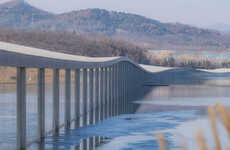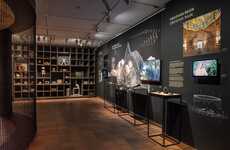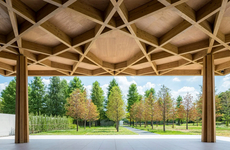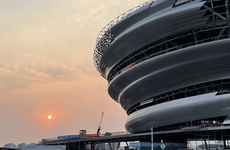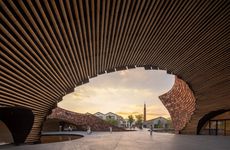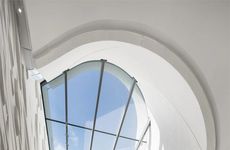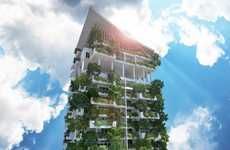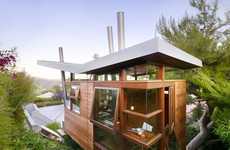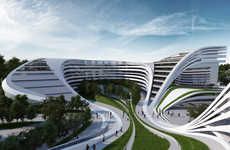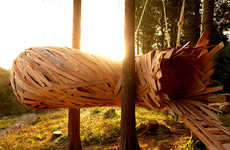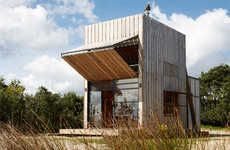
Teshima Art Museum Makes an Elegant Mark in the Landscape
Amelia Roblin — July 20, 2011 — Art & Design
References: ryuenishizawa & archdaily
Recent technologies have enabled architects to accomplish incredible feats when working with subterranean construction, but the incredible thing about the Teshima Art Museum is the way in which it mimics the true topography if its natural surroundings.
Working within the existing physical features of the site's soil and grassy hills, Ryue Nishizawa and artist Rei Naito sculpted two immaculate bubbles formed of unbelievably expansive concrete domes. The organic curvatures are however far from geometric, and one can appreciate the way in which they rise and fall as one self-supported skin, just 25cm thick.
Within these surreal structures near Takamatsu Port, Japan, elliptical skylights bathe the cavernous exhibition spaces in pure sunlight. The Teshima Art Museum looks like a bit of ocean froth sitting on this coastal headland.
Photo Credits: Iwan Baan
Working within the existing physical features of the site's soil and grassy hills, Ryue Nishizawa and artist Rei Naito sculpted two immaculate bubbles formed of unbelievably expansive concrete domes. The organic curvatures are however far from geometric, and one can appreciate the way in which they rise and fall as one self-supported skin, just 25cm thick.
Within these surreal structures near Takamatsu Port, Japan, elliptical skylights bathe the cavernous exhibition spaces in pure sunlight. The Teshima Art Museum looks like a bit of ocean froth sitting on this coastal headland.
Photo Credits: Iwan Baan
Trend Themes
1. Subterranean Architecture - Advancements in subterranean construction technology enable architects to minimize environmental impact and preserve natural topography.
2. Organic Architecture - Architects are integrating organic shapes and curves into their designs to create buildings that blend in with their natural surroundings.
3. Solar-powered Architecture - Architects are incorporating skylights and other solar-powered features into their designs to minimize energy consumption and reduce carbon footprint.
Industry Implications
1. Architecture - Architects can leverage subterranean construction and organic design to create sustainable and visually stunning buildings.
2. Museums and Galleries - Museums and galleries can adopt solar-powered architecture to reduce their environmental impact and create immersive, sunlit exhibition spaces.
3. Tourism and Hospitality - Tourism and hospitality companies can incorporate eco-friendly architecture into their properties to attract environmentally conscious travelers and create unique, picturesque destinations.
5.5
Score
Popularity
Activity
Freshness

